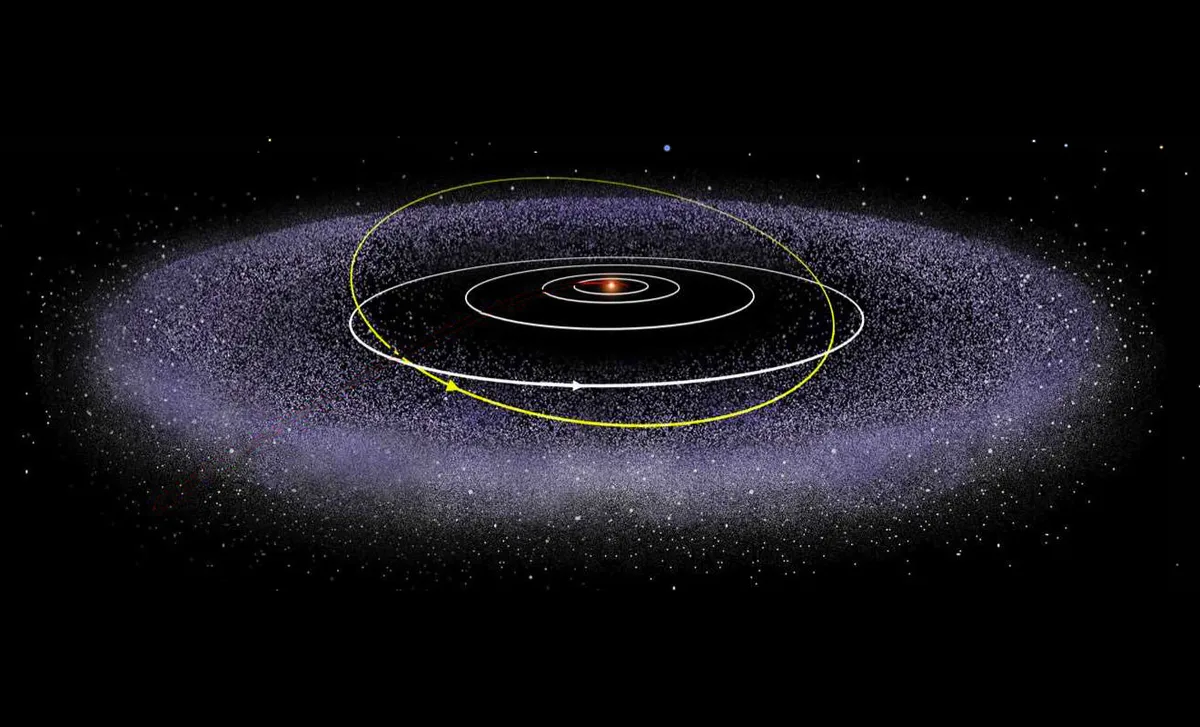Scientists have found frozen water ice around a star like our Sun, just 155 lightyears away.
Astronomers have long suspected that frozen water lurked in systems around distant stars, and now the James Webb Space Telescope has delivered proof.

Water is a key ingredient for life as we know it, so the detection could have implications for the likelihood that life could exist beyond our Solar System.
It could also tell scientists more about the process of how planets form around stars.
What's more, the water ice discovered is the exact type that we find in our own Solar System.

What Webb found around HD 181327
Young star HD 181327 is just 23 million years old, which makes it a cosmic youngster compared to our 4.6-billion-year-old Sun.
This star slightly bigger and hotter than our Sun, which means the system around it is slightly larger than our Solar System.
But Webb found a wide, dust-free gap close to the star, with a debris disk further out that mirrors our own Kuiper Belt, a ring of rocky material at the edge of our Solar System.

"Webb unambiguously detected not just water ice, but crystalline water ice, which is also found in locations like Saturn’s rings and icy bodies in our solar system’s Kuiper Belt," says Chen Xie, lead author of the new paper and an assistant research scientist at Johns Hopkins University in Baltimore, Maryland.
"When I was a graduate student 25 years ago, my advisor told me there should be ice in debris disks, but prior to Webb, we didn’t have instruments sensitive enough to make these observations," says Christine Chen, a co-author of the study.

Chaotic cosmic snow globe
Star system HD 181327 may be young, but it's buzzing with activity.
Regular collisions between icy bodies around the star release tiny particles of dusty water ice, which Webb can detect with its NIRSpec instrument.
Most of the ice is found in the outer regions of the disk and makes up over 20% of the material.
Closer-in, the ice is less abundant, about 8%, and is likely vaporised by the star's ultraviolet light.
Rocks known as planetesimals may also have frozen water locked inside them, which Webb can't detect.
As well as an ingredient for life, water ice is a crucial ingredient for planet formation, influencing the birth of giant planets and potentially delivering water to rocky planets like Earth.
"The presence of water ice helps facilitate planet formation," says Chen Xie, lead author of the study.
"Icy materials may also ultimately be 'delivered' to terrestrial planets that may form over a couple hundred million years in systems like this."
Read the full paper at www.nature.com/articles/s41586-025-08920-4
